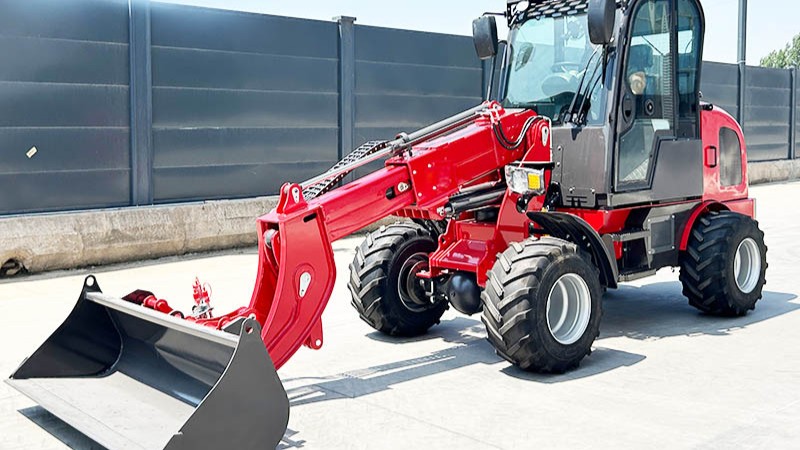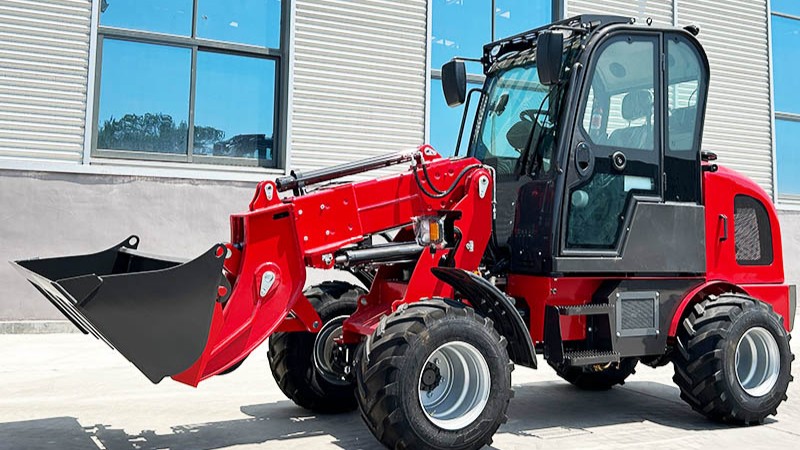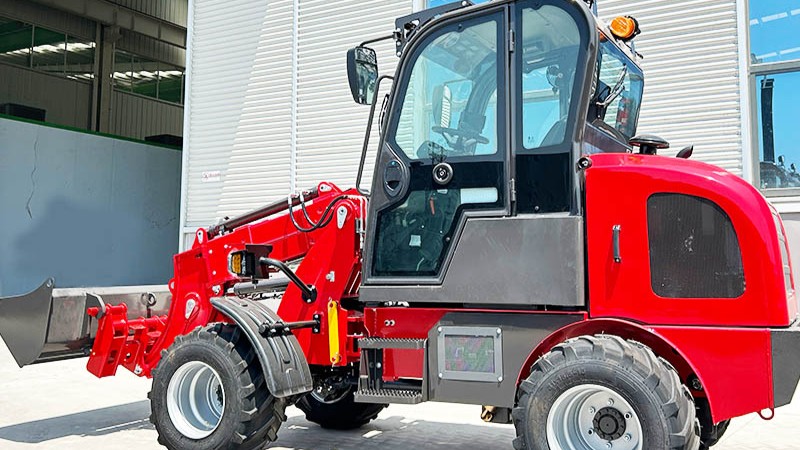The first major advantage of telescopic loaders over forklifts lies in their superior operational flexibility, which is mainly reflected in the adjustable length and angle of the telescopic arm. Forklifts typically have a fixed mast structure, and the lifting height and horizontal reach are relatively limited. When operating in narrow spaces or uneven terrain, forklifts often face difficulties in adjusting the position of the load, and even need to move the entire vehicle repeatedly to complete the handling task, which not only increases the operation time but also increases the risk of collision with surrounding objects. In contrast, the telescopic arm of a telescopic loader can be freely extended and retracted horizontally, and the angle of the arm can also be adjusted within a large range. For example, in a warehouse with irregularly placed goods, a telescopic loader can adjust the length of the telescopic arm according to the distance of the goods, and adjust the angle of the arm to align with the goods accurately without frequent movement of the vehicle. This not only saves the time of adjusting the vehicle position but also greatly improves the accuracy of loading and unloading. In addition, the telescopic arm can also achieve functions such as lifting, tilting, and rotating, which enables the telescopic loader to handle goods of different shapes and sizes more flexibly. For instance, when handling large - sized plates or irregularly shaped mechanical parts, the telescopic arm can be adjusted to the appropriate angle and length to ensure that the goods are stably clamped and transported, while forklifts may face difficulties in clamping due to the fixed structure of the fork, resulting in potential safety hazards.
Another significant advantage of telescopic loaders over forklifts is their stronger load - bearing capacity and wider load - bearing range. In terms of load - bearing capacity, although forklifts have different models with varying load - bearing capacities, most of the commonly used forklifts in warehouses and factories have a load - bearing capacity ranging from 1 to 5 tons. When faced with heavy - duty handling tasks, such as lifting large construction materials or heavy agricultural machinery, forklifts often struggle to meet the requirements. Telescopic loaders, on the other hand, are designed with a more robust structure and a more powerful power system. Many medium - and large - sized telescopic loaders have a load - bearing capacity of more than 5 tons, and some heavy - duty models can even reach a load - bearing capacity of 10 tons or more. This enables telescopic loaders to easily handle heavy - duty tasks that forklifts cannot undertake, expanding the scope of application of the equipment. In terms of load - bearing range, forklifts are limited by the fixed mast structure, and their lifting height is generally between 3 and 6 meters. When working in high - rise warehouses or construction sites that require high - altitude operations, forklifts can only handle goods within a certain height range, and additional equipment such as cranes may be needed to complete high - altitude tasks, which increases the cost of equipment investment and operation. Telescopic loaders, however, have a much higher lifting height due to the telescopic arm. The lifting height of ordinary telescopic loaders can reach 8 to 12 meters, and some special - purpose models can even exceed 15 meters. This allows telescopic loaders to directly complete high - altitude loading and unloading tasks, such as stacking goods in high - rise warehouses or lifting construction materials to the upper floors of buildings, without the need for additional equipment. At the same time, the horizontal reach of the telescopic arm also gives telescopic loaders an advantage in long - distance handling. Forklifts can only handle goods within a short horizontal distance in front of the vehicle, while telescopic loaders can extend the arm to reach goods that are far away from the vehicle, such as loading and unloading goods on the side of a truck or handling materials in a deep pit. This not only improves the efficiency of handling but also reduces the difficulty of operation in special environments.
The third major advantage of telescopic loaders over forklifts is their excellent multi - scenario adaptability, which allows them to perform well in a variety of complex and harsh working environments. Forklifts are mostly designed for flat and hard ground, such as concrete floors in warehouses and factories. When working on uneven terrain, such as construction sites with potholes, farmland with soft soil, or outdoor yards with gravel, forklifts are prone to slipping, tilting, or getting stuck, which not only affects the normal progress of work but also poses a great threat to the safety of operators and equipment. Telescopic loaders, on the other hand, are equipped with a more stable chassis and a more powerful suspension system. The chassis of many telescopic loaders adopts a four - wheel drive design, which enhances the traction and passing ability of the equipment on rough terrain. At the same time, the adjustable wheelbase and ground clearance of the telescopic loader enable it to adapt to different ground conditions. For example, in a construction site with uneven ground, the telescopic loader can adjust the ground clearance to avoid the chassis being scratched by obstacles, and the four - wheel drive system can ensure that the equipment moves forward stably without slipping. In agricultural scenarios, such as farmland operations, the telescopic loader can be equipped with special tires suitable for soft soil to prevent the equipment from sinking into the soil, and the flexible telescopic arm can be used to load and unload agricultural products such as grain and hay, or to assist in the installation and maintenance of agricultural machinery. In addition, telescopic loaders can also be equipped with a variety of auxiliary tools to further expand their application scope. For example, by replacing the fork with a bucket, the telescopic loader can be used for excavating and transporting soil; by installing a grabber, it can clamp and transport logs or stones; by equipping a lifting hook, it can hoist heavy objects. This multi - functional design makes the telescopic loader a "multi - purpose machine" that can meet the needs of different operations in different scenarios, while forklifts are mostly limited to material handling tasks and have relatively single functions. Even if some forklifts can be equipped with simple auxiliary tools, their adaptability to complex scenarios is far less than that of telescopic loaders.
Post time:Sep.30.2025



